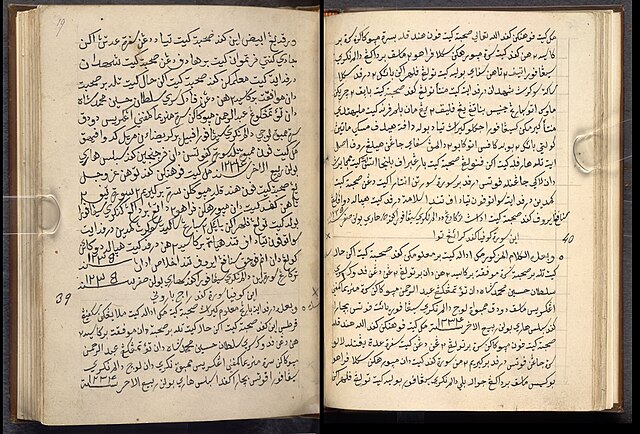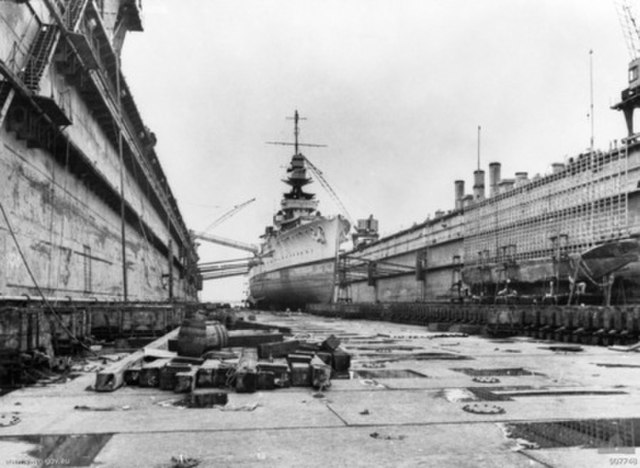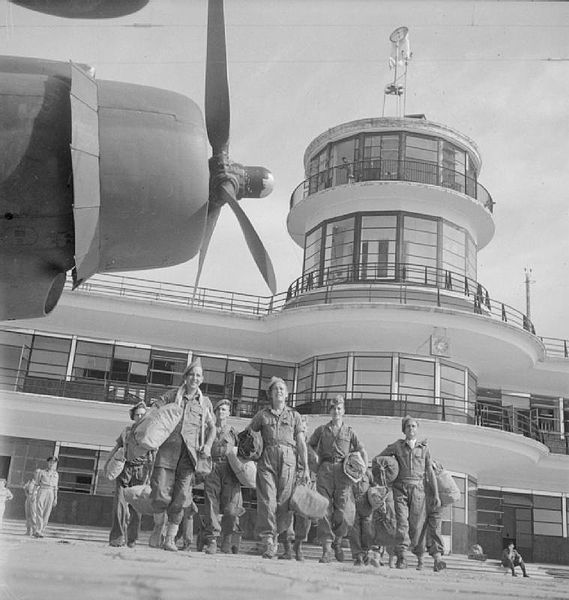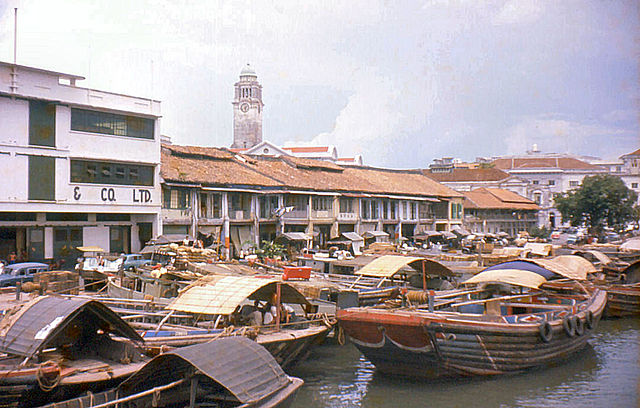The Singapore strategy was a naval defence policy of the United Kingdom that evolved in a series of war plans from 1919 to 1941. It aimed to deter aggression by Japan by providing a base for a fleet of the Royal Navy in the Far East, able to intercept and defeat a Japanese force heading south towards India or Australia. To be effective it required a well-equipped base. Singapore, at the eastern end of the Strait of Malacca, was chosen in 1919 as the location of this base; work continued on this naval base and its defences over the next two decades.
HMS Repulse leads her sister ship HMS Renown and other Royal Navy capital ships during manoeuvres in the 1920s
The troopship RMS Queen Mary in Singapore Graving Dock, August 1940
A British warship inside the Admiralty IX floating dry dock at Singapore Naval Base in September 1941
One of Singapore's 15-inch coastal defence guns elevated for firing
Singapore, officially the Republic of Singapore, is an island country and city-state in maritime Southeast Asia. It is located about one degree of latitude north of the equator, off the southern tip of the Malay Peninsula, bordering the Strait of Malacca to the west, the Singapore Strait to the south along with the Riau Islands in Indonesia, the South China Sea to the east, and the Straits of Johor along with the State of Johor in Malaysia to the north. The country's territory comprises one main island, 63 satellite islands and islets, and one outlying islet; the combined area of these has increased by approximately 25% since the country's independence as a result of extensive land reclamation projects. It has the second highest population density of any country in the world, although there are numerous green and recreational spaces as a result of urban planning. With a multicultural population and in recognition of the cultural identities of the major ethnic groups within the nation, Singapore has four official languages: English, Malay, Mandarin, and Tamil. English is the lingua franca, with its exclusive use in numerous public services. Multi-racialism is enshrined in the constitution and continues to shape national policies in education, housing, and politics.

Letter from William Farquhar to Sultan Muhammad Kanzul Alam, the 21st Sultan of Brunei, dated 28 November 1819. In the first line, Farquhar mentions that Sultan Hussein Shah and Temenggong Abdul Rahman allowed the British East India Company to establish a factory in Singapore on 6 February 1819.
Panorama of Singapore at sunrise, 1865, lithograph by Vincent Brooks.
British evacuation in 1945 after the Japanese surrender. Kallang Airport's control tower near the city has been conserved.
Singapore thrived as an entrepôt. In the 1960s, bumboats were used to transport cargoes and supplies between nearshore ships and Singapore River.








